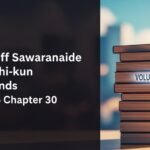The question of how Hashirama Senju, the legendary First Hokage, met his end has puzzled Naruto fans for years. While celebrated as an extraordinarily powerful shinobi who founded Konohagakure, his death remains shrouded in mystery within the anime’s expansive lore. Did he perish in battle, succumb to illness, or simply die of old age?
Key Facts:
- Hashirama Senju was the First Hokage of Konohagakure and a founding father of the village.
- He was known as the “God of Shinobi” for his extraordinary battle prowess.
- The exact cause and circumstances around his death remain unknown in the series.
- Several theories exist attempting to explain how he died – natural causes and assassination being chief among them.
- His death carries important political implications and leaves some questions unanswered in the Naruto world.
As an avid Naruto enthusiast myself, I have dug deep into the fandom, its forums, and available resources from the manga and anime to unravel this mystery. Come, walk alongside me into the shadows of shinobi history to discover everything we know, all that we can theorize, and that which remains elusive about the end of this legendary figure.
Hashirama Senju: The Legendary First Hokage
Hailed as the “God of Shinobi” in his heyday, Hashirama Senju was an immensely talented ninja and leader. He co-founded Konohagakure alongside Madara Uchiha in an era of constant warfare, envisioning the village as a sanctuary of unity and peace between feuding clans.
The Founding of Konohagakure and Hashirama’s Vision
As shinobi clans waged endless battles during the Warring States period, Hashirama grew weary of the cycle of violence and death despite being considered the most gifted ninja of the era. Along with his boyhood friend and rival Madara Uchiha, Hashirama spearheaded peace negotiations between their clans which culminated in the founding of Konohagakure.
He hashirama natural death theory that by bringing together the most powerful shinobi clans and families, the village could become a beacon of cooperation and stability. His optimistic vision and unusually compassionate nature for a shinobi captured hearts and minds, leading clans like the Uchiha and Hyuuga to buy into his dream. Hashirama sought to create a system of checks and balances, becoming the First Hokage to preside over the unified clans while ceding authority over his own Senju Clan as proof of his sincerity.
Even his former rival, Madara Uchiha set aside generations of hatred and suspicion between the Uchiha and Senju to help Hashirama realize this vision.
Hashirama’s Powers and Influence
Hashirama was considered the strongest shinobi of his era, bearing a unique Wood Release kekkei genkai ability that set him apart from his peers. By converting his chakra into vegetation, he could produce wood and plants for combat, construction, and restoration jutsu previously unseen in the shinobi world.
Legends of his godlike prowess and duels with Madara were common knowledge, chronicling techniques like his Wood Golem Jutsu for attack and suppression and his automated flowering trees for area denial. At the height of his power, he had tamed and mastered the tailed beasts through his wood style techniques – his capture of the nine-tailed fox Kurama allowing Konohagakure to cement itself as the strongest of the five major shinobi villages.
Hashirama sought to spread this strength through bonds rather than conflict, however, using his influence to quell disputes and avoid aggressive expansion policies. Even after death, the iconography of his carved visage watching over Konohagakure endures as a symbol of his compassion and protective spirit.
Theories Behind Hashirama’s Mysterious Death
While the manga and anime reference Hashirama’s death, the exact cause remains deliberately ambiguous with several major theories discussed amongst fans. Let’s analyze each one:
The Natural Causes Theory
The prevailing assumption held by characters like the Third Hokage Hiruzen Sarutobi attributes Hashirama’s death to natural causes stemming from old age. As a revered leader often referenced posthumously in political crisis, the lack of detail implicates a non-violent demise. Several clues support this:
Firstly, Hashirama was likely very old when he passed away as his youth and middle age encompassed decades of warring states conflict, the founding of Konohagakure, training successors like his brother Tobirama, and finally the early years of the village before his death.
Secondly, given Hashirama’s near god-like healing ability, the only realistic way for him to be killed against his will would probably be an extremely overt assassination. No evidence in lore indicates such a blatant attack.
Lastly, studying Tobirama and Hiruzen’s deaths help establish patterns – neither successor Hokage activated full emergency protocols, reacted vengefully, or characterized Hashirama’s death as suspicious. This strongly suggests the First Hokage died peacefully rather than being struck down unexpectedly.
Battle-Induced Fatality
However, a popular alternative presents the notion that despite his powers, Hashirama’s decades of constant battle took an irrevocable toll – the theory of battle-induced fatality.
Hashirama’s numerous confrontations with powerful shinobi like Madara Uchiha were destructive affairs, leaving lasting injuries that failed to heal despite Hashirama’s regeneration. Supporting this idea, Madara himself noted Hashirama was weakened in later years, potentially from accrued damage or simple age.
Their titanic final battle at the Valley of the End to settle leadership over Konohagakure included the summoning of massive wood golems and tailed beasts as weapons after all. Records indicate Hashirama successfully ended the landscape-changing duel by defeating and seemingly killing Madara. But did he sustain a fatal wound himself?
If so, Tobirama and Hiruzen could have chosen to keep it secret to prevent perception of vulnerability while the newly founded village stabilized in a world still prone to conflict. This intentional suppression of details surrounding their benefactor’s death would explain key ambiguities quite elegantly.
The Toll of Kekkei Genkai
Hashirama’s unique Wood Release kekkei genkai enabled his extraordinary feats, but some speculate that overuse of this innate power caused irreparable damage. His signature Deep Forest Creation jutsu produced towering forests, flowering trees, and massive wood clones by converting Hashirama’s life force and chakra into vegetation. Constructing Konohagakure’s infrastructure and utilizing countless wood jutsu in regular combat may have drained him.
Likewise, Hashirama’s ability to restrain and suppress tailed beasts seemingly relied on flooding their systems with his chakra – a continuous and exhausting process when maintaining long-term stability over beasts like the Nine-Tails Kurama. Did pushing his innate talents to their limits place too great a strain?
While his vitality recovered from injury and battle thanks to regeneration, overexertion of his kekkei genkai may have worn away at Hashirama’s stamina until his death.
Assassination Speculations
The most intriguing theory draws on inconsistencies in accounts and motivations of groups who may have sought Hashirama’s death. Given his extraordinary prowess, only an elite assassin striking unaware could succeed.
Some posit Madara himself after surviving their epic duel and going into hiding. Others believe Iwa or Kumo village partisans arranged the deed, hoping to fell Konoha’s strongest leader while the infrastructure literally rested on the pillars of his woods jutsu.
More controversially, Uchiha leaders who felt slighted by Tobirama awarding the Hokage title to Hashirama could have plotted an intricate betrayal. Or Danzo’s extremist Root faction might have initiated their first unsanctioned execution against a venerable figure they deemed too conciliatory.
Ultimately, while compelling, no hard evidence directly supports these assassination conjectures. But they do open discussions of deeper village intrigue and politics – the high tensions between factions that the likes of Hashirama, Tobirama, and Hiruzen balanced so masterfully in Konoha’s early days.
Unresolved Questions and Continuing Legacy
Despite the cloud of uncertainty around Hashirama’s death, its impact on characters and events in the series proved undeniable. Hiruzen’s idealism, Tsunade’s wanderings, Danzo’s extremism or even Orochimaru’s twisted experiments – all tied indirectly to the values and visions their teacher had instilled as First Hokage. His strength tempered by mercy resonated across generations.
The lack of direct answers keeps discussions thriving within the fandom, building on unconfirmed details. When and how did Hashirama pass away? Who might have been involved? Does a classified record sit obscured in some ANBU archive?
Ultimately, the precise cause of the First Hokage’s death remains secondary to the groundbreaking legacy he ushered into the world. Hashirama Senju’s existence transformed the very philosophy of shinobi life itself, placing camaraderie and compassion alongside courage and cunning at the core of Konoha’s teachings. The Will of Fire continues to burn bright even if its most brilliant torch now slumbers in history’s shadows.
FAQs About Hashirama Senju:
Q: Who killed the first Hokage?
A: The killer of the First Hokage, Hashirama Senju, is unknown. His cause of death remains a mystery within the Naruto series with several theories but no definitive culprit.
Q: How did the second Hokage die?
A: Tobirama Senju, the Second Hokage, died in battle against the elite Kumogakure team known as Kinkaku Force during the First Great Ninja War – sacrificing himself to ensure his team’s escape.
Q: What were the long-term effects of Hashirama’s death in the Shinobi world?
A: As the First Hokage and Konohagakure founder, Hashirama’s death left a power vacuum with political implications. However, the enduring influence of his ideals on subsequent leaders and the village itself proved more profound over time.
Q: Did Hashirama’s death contribute to the Uchiha clan downfall?
A: No overt evidence suggests Hashirama’s death itself sparked the Uchiha downfall. However, the post-Hashirama political tensions from disputes over village leadership hierarchy and Tobirama’s oversight role does correlate to the decline of Uchiha trust and standing over generations.
Summary
Hashirama’s death sparked many questions but his visionary leadership ignited enduring change far beyond the mystery of his final days. By sharing his struggle for peace between warring clans despite the systemic violence, young Naruto echoes those hopeful ideals across generations. And so the Will of Fire passes like the Hokage mantle, kindled by legends.
Overall, the exact cause of the First Hokage’s death remains ambiguous. Yet by embracing Hashirama’s spiritual legacy over the physical minutiae, peace and unity can blossom from any conflict or loss.
I hope this post brought together the various clues, fan theories and deeper insights into how one exceptional shinobi lived and forever changed the world he left in death. Let the debates and discussions continue!



